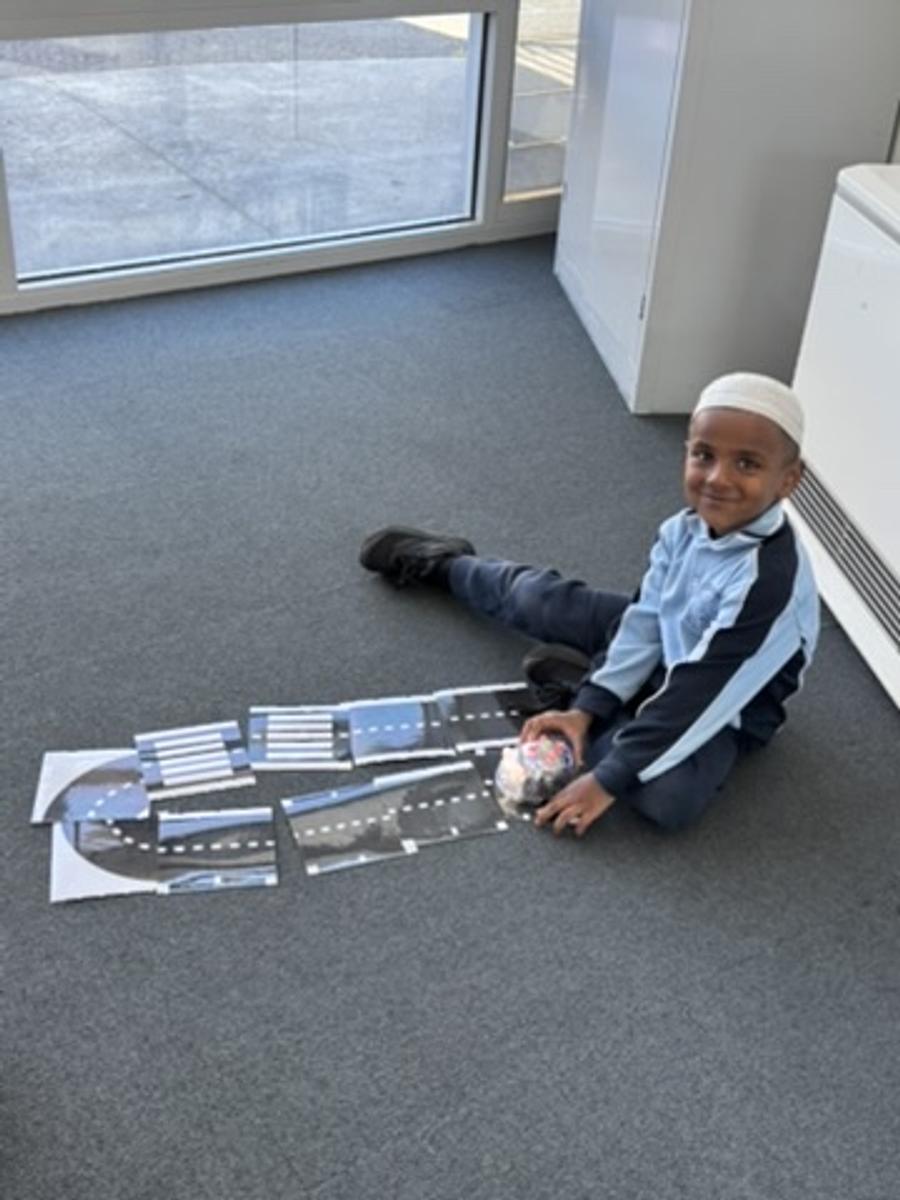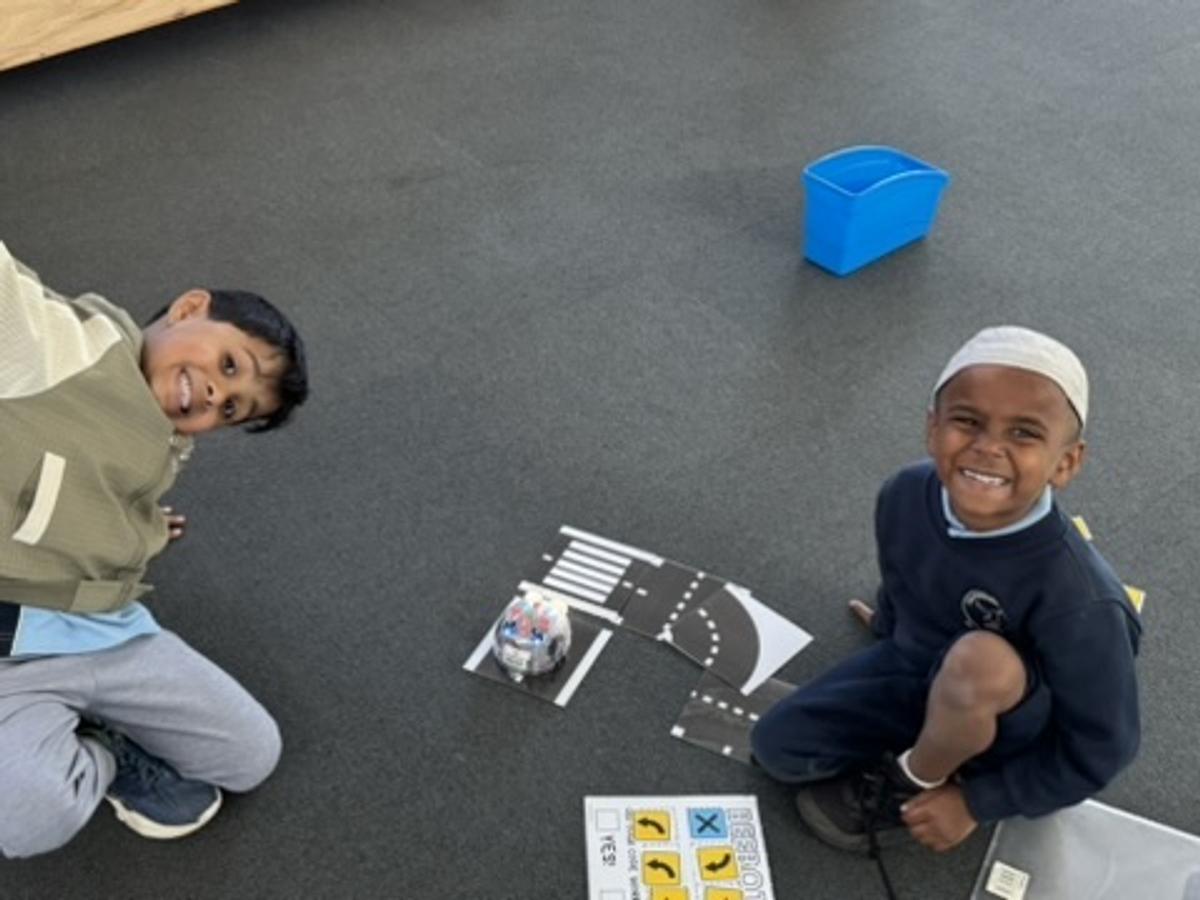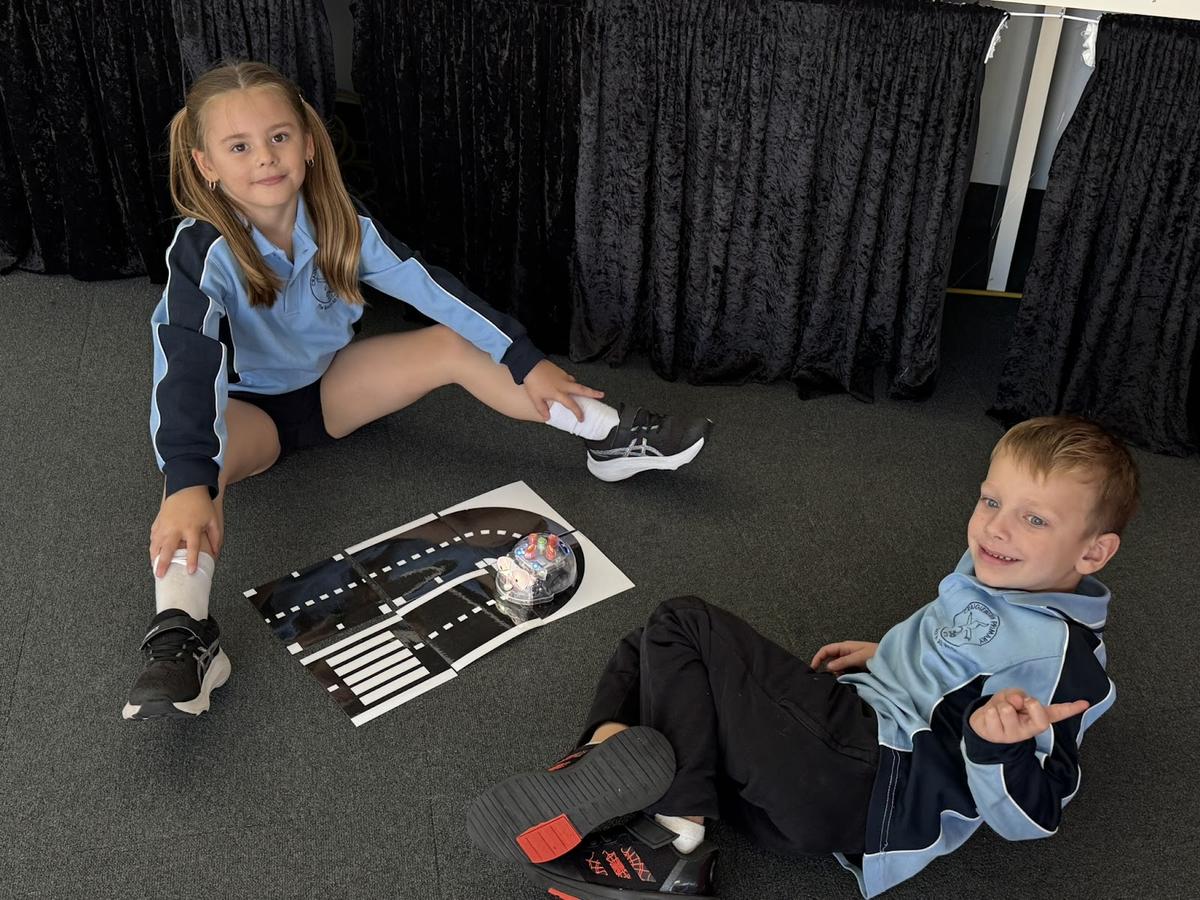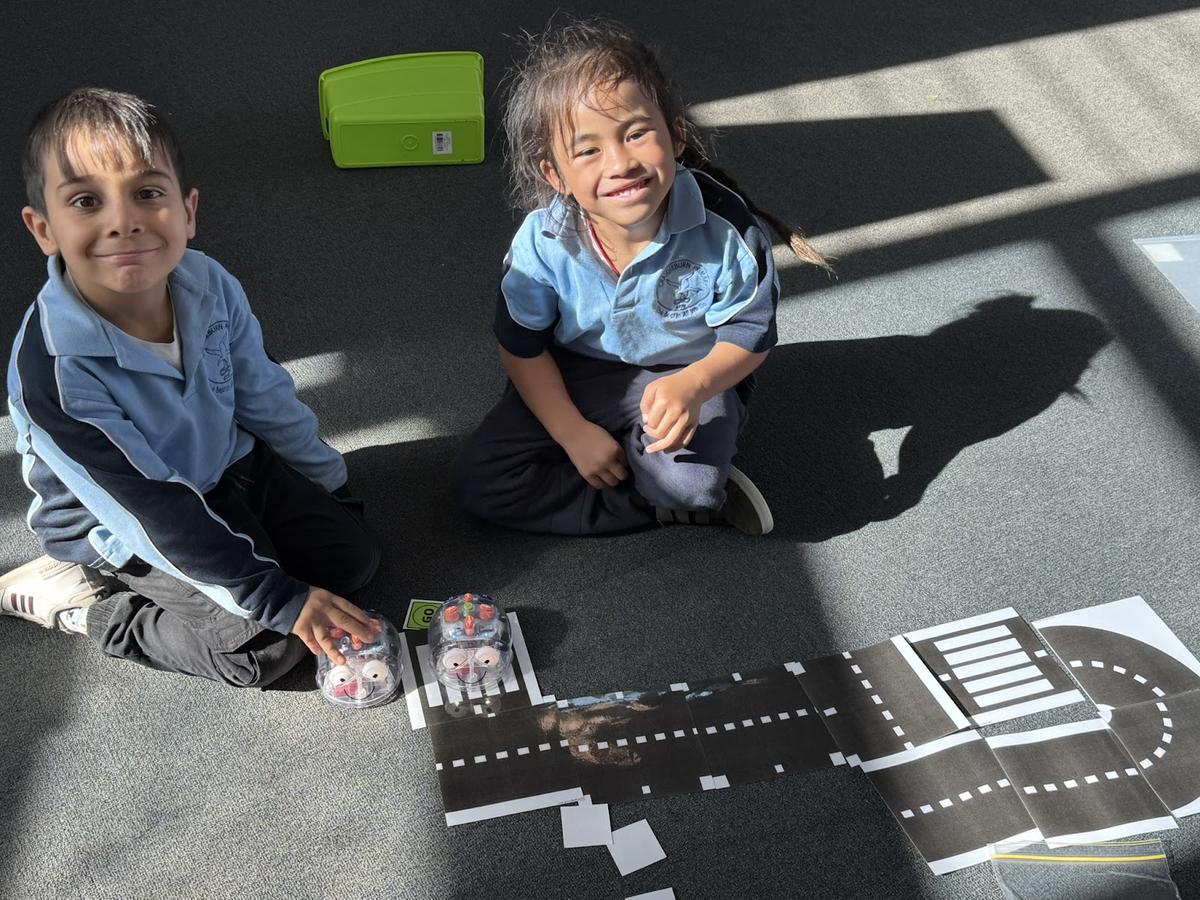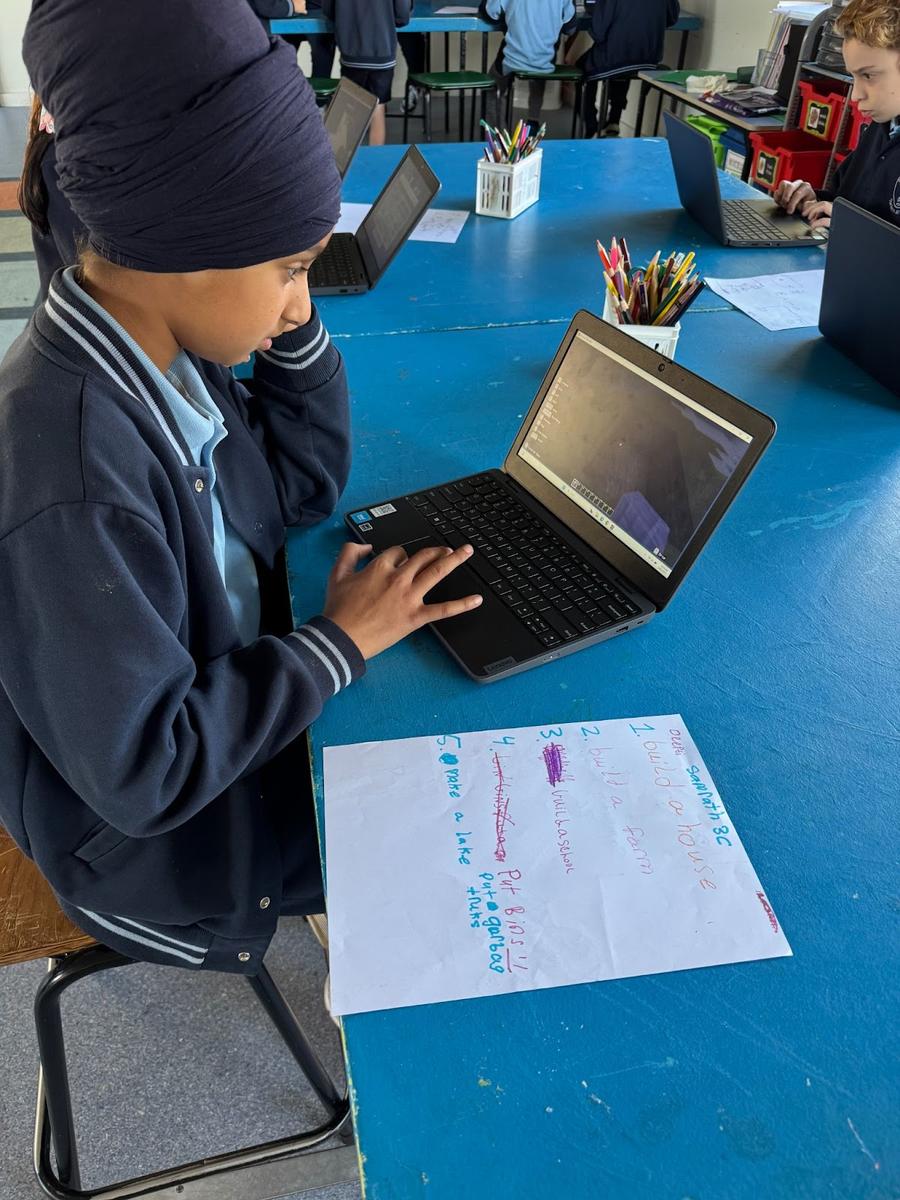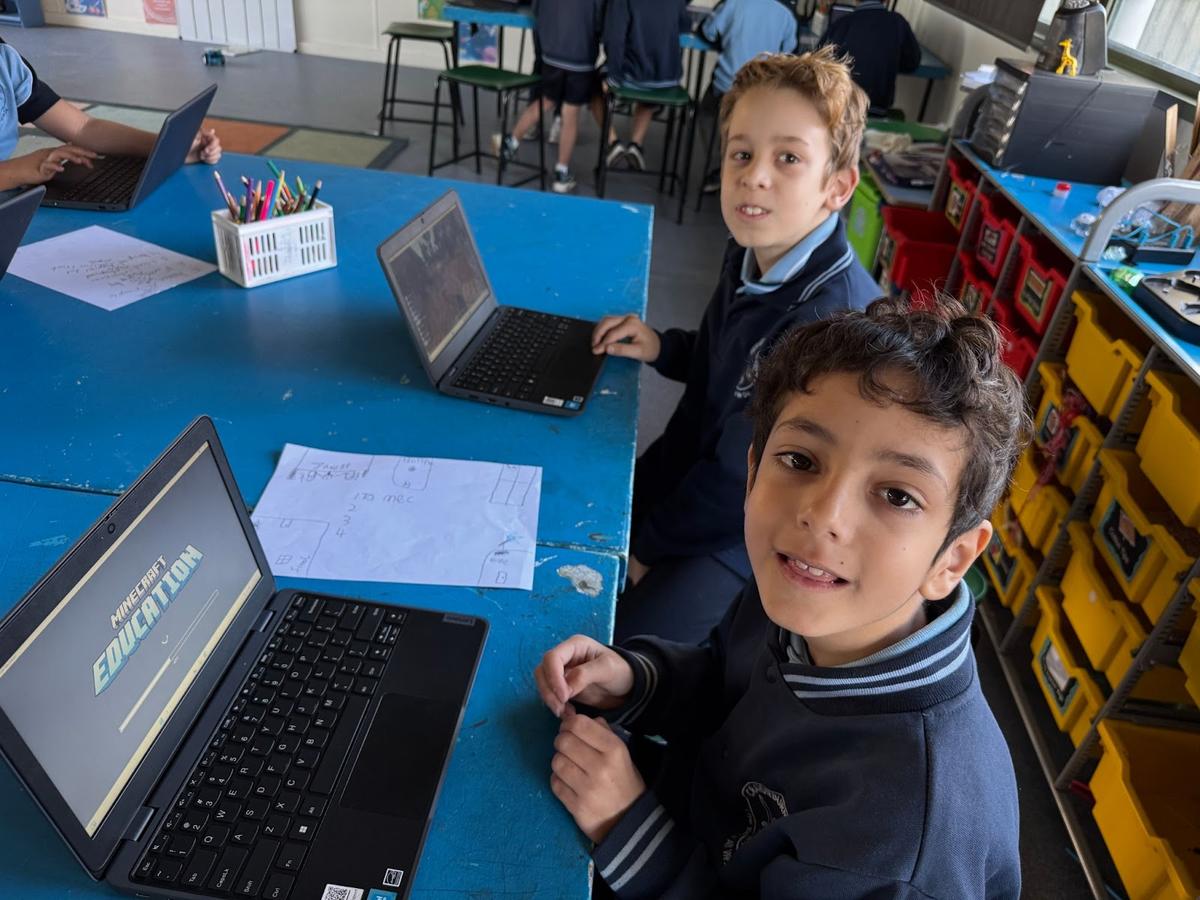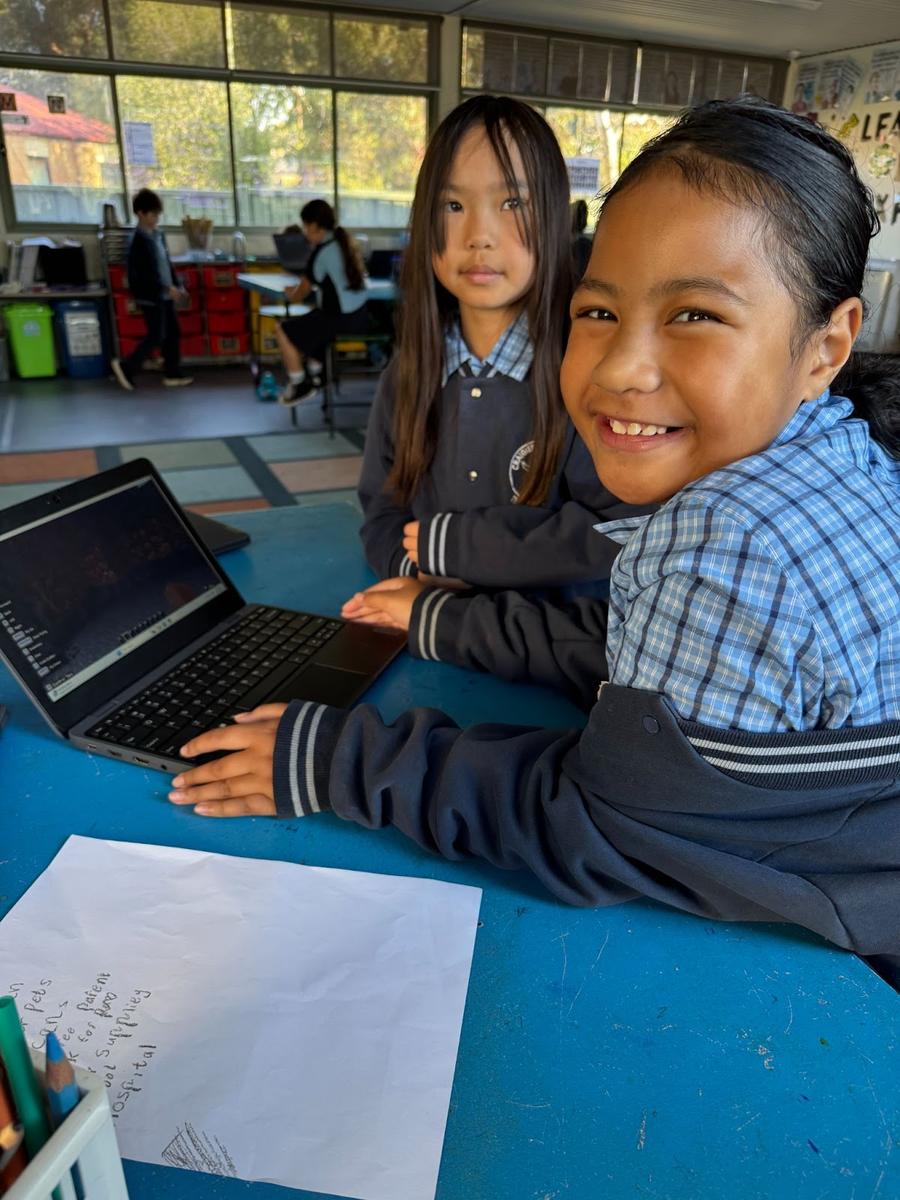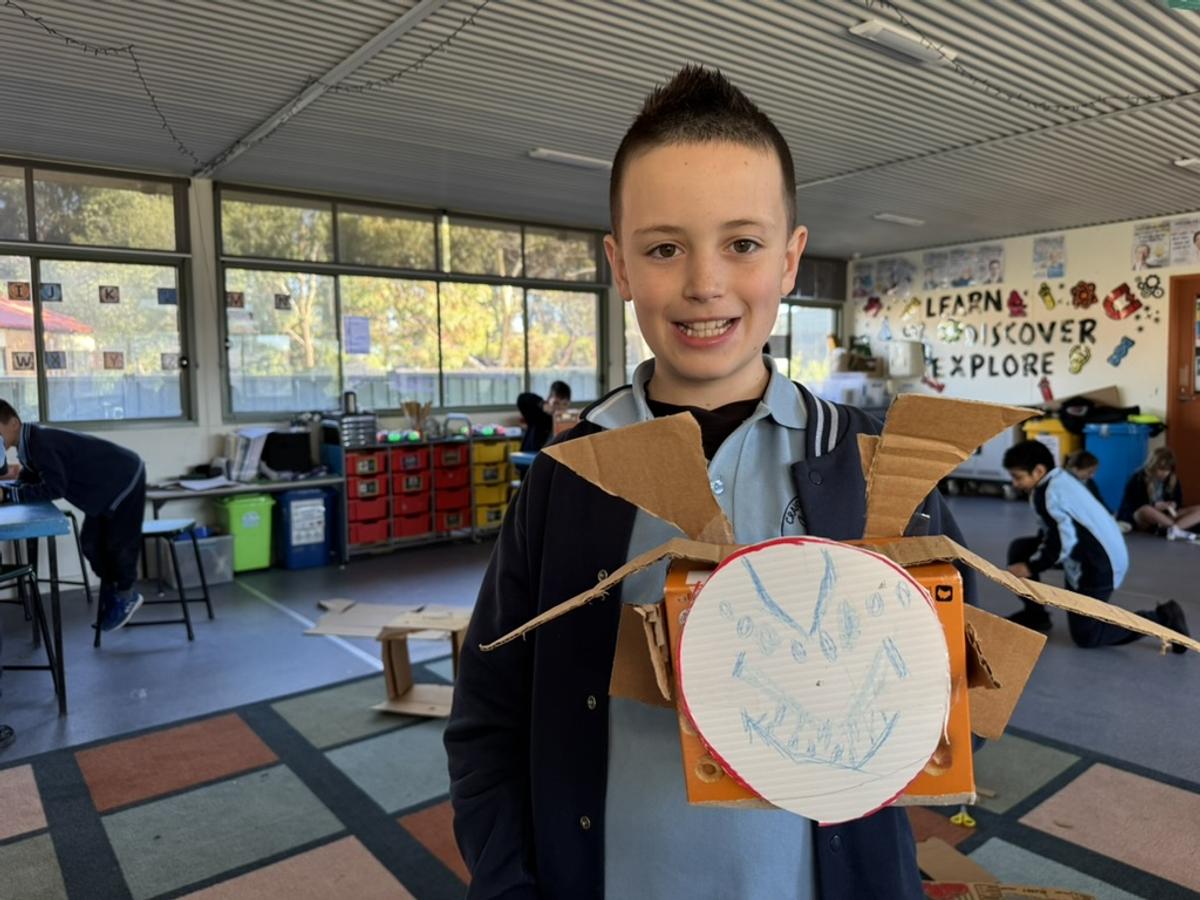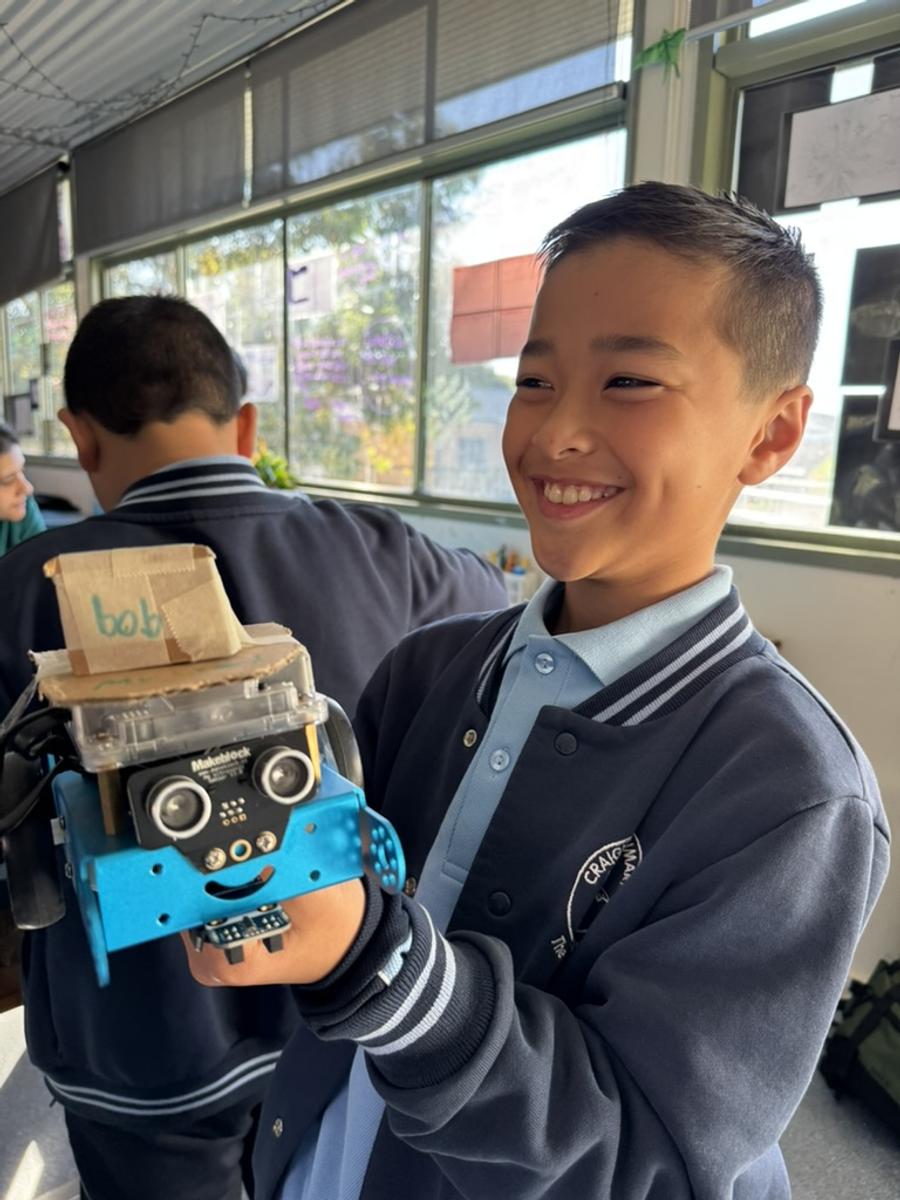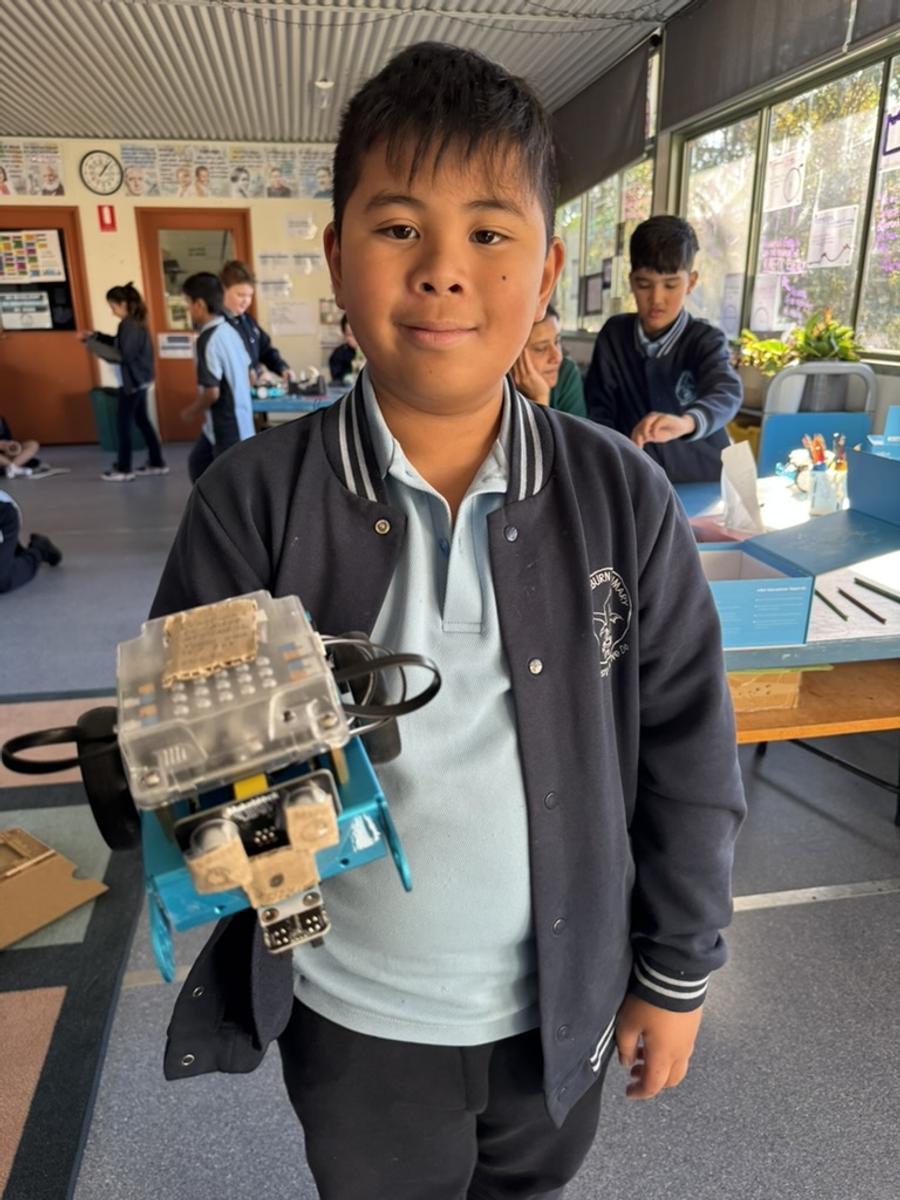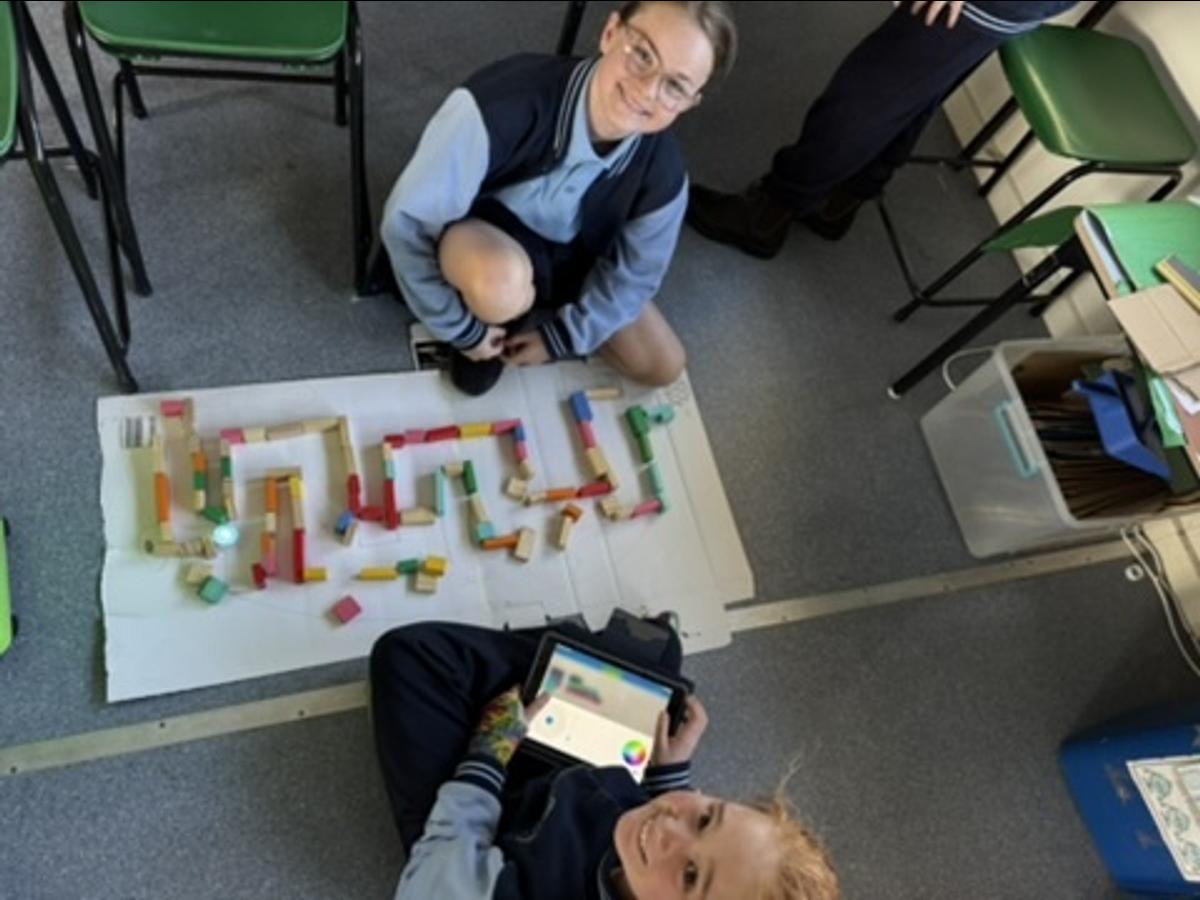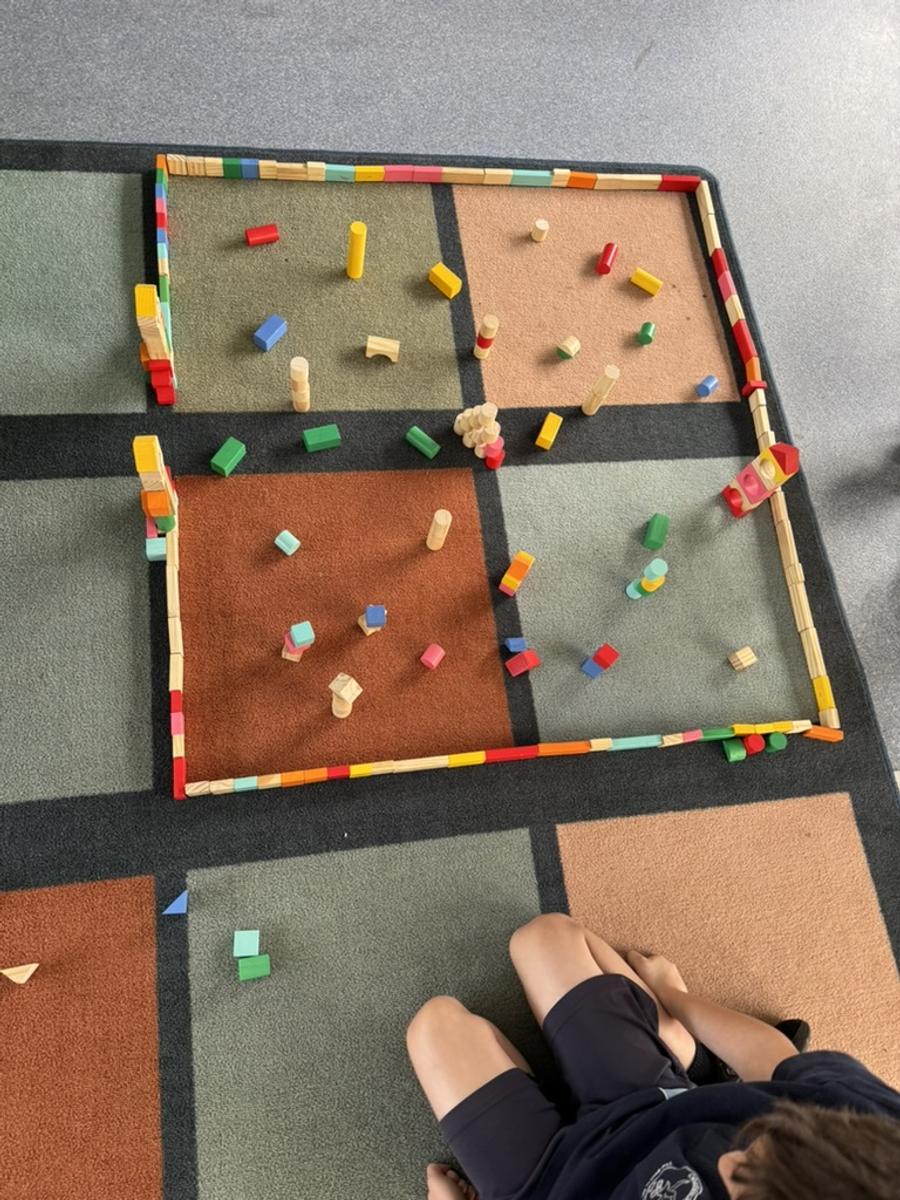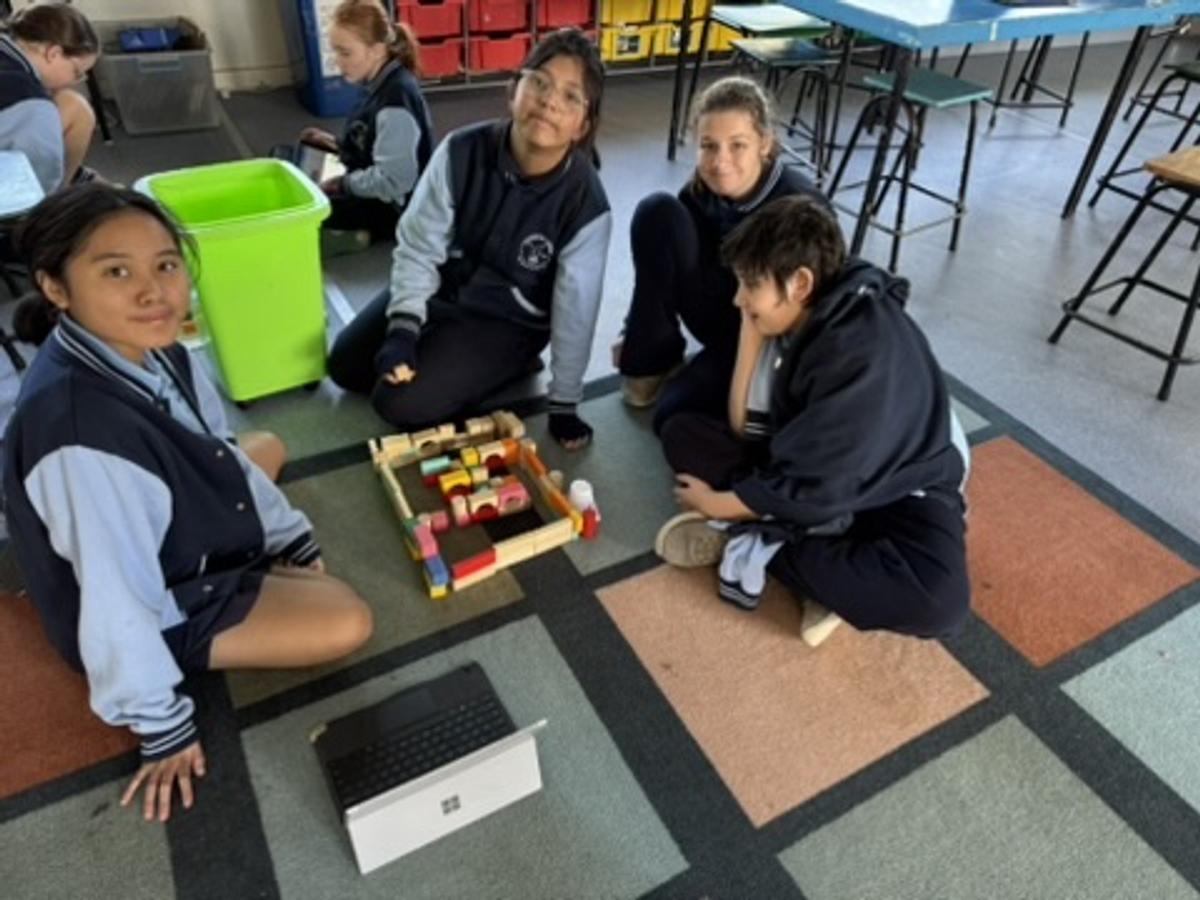Science Technology Engineering and Maths

STEM
Foundation:This fortnight in STEM, Foundation students have been continuing their journey into the world of robotics and early coding using Bee-Bots. A Bee-Bot is a small, bee-shaped robot designed for young learners. It can be programmed using simple arrow buttons to move forward, backward, and turn, helping our students understand that a sequence of steps (or code) can control a robot's movements.
This week, students were introduced to Bee-Bot road squares – a set of map tiles that form a mini road network. Working in pairs and small groups, students had to plan a path across the road and then write a code to guide their Bee-Bot from the start to the end. This required them to problem-solve, predict movements, and revise their thinking if their first code didn’t work.
Foundation A students experimenting with creating codes to drive down their constructed street.
Year 1
Over the past fortnight, Year 1 students have been developing their coding and design skills by starting a new project: creating a maze game using ScratchJr. ScratchJr is a visual programming app that lets young learners create stories, games, and animations by snapping together coding blocks.
So far, students have designed their own mazes, thinking creatively about the layout and how a character might navigate from start to finish. This week, they will begin coding their maze games – using simple sequences of blocks to program their characters to move through the maze correctly.
Year 2
This fortnight, Year 2 students have been learning about the different parts of a laptop, including the various ports and plugs, and what each one is used for. They have been developing their confidence in logging onto the computers independently, opening programs, and using a web browser safely and effectively.
This week, students began exploring their local and global community digitally using Google Earth. They have been learning how to search for places, navigate maps, and use digital tools to make observations — skills which directly connect with their classroom inquiry focus.
Year 3
Year 3 students have been continuing their Minecraft Education project titled Peace with Nature, where they are learning to represent sustainable and environmentally friendly ideas through creative digital builds.
Last week, we focused on how different eco-friendly features—like composting, solar panels, water tanks, and recycling systems—can be visually represented within Minecraft. Students have been thinking critically about how to communicate these concepts using Minecraft’s tools and blocks.
One fantastic example came from a student in 3A who made the clever connection that coloured wool blocks with trapdoors could be used to represent our different waste and recycling bins. This creative idea sparked a broader discussion about how we could represent real-world sustainability practices in our builds.
Students have also begun discussing how they can incorporate the United Nations Sustainable Development Goals (SDGs) into their virtual communities. For example:
- Goal 6: Clean Water and Sanitation could be shown by designing clean water catchment areas or water filtration stations.
- Goal 7: Affordable and Clean Energy might be shown by including wind turbines or solar farms.
- Goal 15: Life on Land could be reflected in animal sanctuaries, tree planting, or national parks.
Photos - Students from 3C using their plans to start creating their ‘Peace with Nature’ Minecraft.
Year 4
This fortnight, Year 4 students completed their Biosecurity Robot design challenge – a task that asked them to think like designers and engineers, creating a robot that could help protect Australia’s environment from biosecurity threats such as pests or diseases. Students explored real-world problems, discussed possible solutions, and used a range of materials to bring their designs to life.
To finish the project, students took time to reflect on the purpose behind their robot designs, the
challenges they faced, and what improvements they might make in future versions. This reflection encouraged deeper thinking about how design can be used to solve problems and contribute to a healthier, more sustainable world.
Photos- Students from Year 4 with their completed Bio-Bots
Year 5
This fortnight, Year 5 students have continued their work on the ACER STEM Video Game Design Challenge, deepening their understanding of what makes a game both functional and engaging. As part of their learning, students analysed two example games – a maze game and a cat-and-mouse chase – using Scratch to break down the coding elements behind how the games were built.
Together, we discussed the techniques game designers use, such as loops, conditional statements, and motion blocks, and explored how games can become more interactive through gamification elements. Students shared ideas around introducing lives, levels, and increasing challenges as players progress, thinking about how these features affect both user experience and gameplay strategy.
This learning is helping students prepare to start coding their own games next week, applying their knowledge to create original projects that align with the challenge’s theme of “Journey.”
Year 6
This fortnight, Year 6 students have begun a new unit on media production, exploring the different forms and purposes of media in our world today. We started by comparing print, electronic, and social media, discussing their characteristics, strengths, and how they each influence audiences in different ways.
Students then investigated how videographers use camera techniques to tell stories, studying angles and effects such as point-of-view (POV) shots and slow-motion. We’ve also been discussing the powerful role that music and sound play in media — especially how they shape mood, meaning, and viewer response.
Building on this learning, students are now beginning to plan their own media projects that aim to promote messages about caring for the planet and supporting one another. These student-led productions will focus on themes such as environmental stewardship and social issues like bullying. Ideas being developed in the classroom include dramatised short films, radio broadcasts, stop-motion animations with LEGO or clay, and greenscreen news reports.
This work ties closely to the Media Arts and Digital Technologies curriculum, as students learn to plan, create, and evaluate media artworks for a specific purpose and audience.
Students from 6C with their completed Sphero Games from Week 3. Each Game was created with an element of Block Coding as well as the manual drive function.
